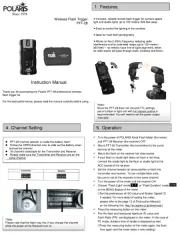Polaris RZR XP 4 1000 EPS High Lifter (2016) Manual
Læs gratis den danske manual til Polaris RZR XP 4 1000 EPS High Lifter (2016) (153 sider) i kategorien Ikke kategoriseret. Denne vejledning er vurderet som hjælpsom af 12 personer og har en gennemsnitlig bedømmelse på 4.5 stjerner ud af 6.5 anmeldelser.
Har du et spørgsmål om Polaris RZR XP 4 1000 EPS High Lifter (2016), eller vil du spørge andre brugere om produktet?

Produkt Specifikationer
| Mærke: | Polaris |
| Kategori: | Ikke kategoriseret |
| Model: | RZR XP 4 1000 EPS High Lifter (2016) |
Har du brug for hjælp?
Hvis du har brug for hjælp til Polaris RZR XP 4 1000 EPS High Lifter (2016) stil et spørgsmål nedenfor, og andre brugere vil svare dig
Ikke kategoriseret Polaris Manualer










Ikke kategoriseret Manualer
- Hovicon
- Martha Stewart
- Guardian
- EPH Elektronik
- Scotsman
- Intenso
- Cicada Audio
- Kodak
- Amazfit
- Transcend
- AURALiC
- Redback
- Rosseto
- Lindell Audio
- Promise Technology
Nyeste Ikke kategoriseret Manualer









